Search Result
Results for "
chirality
" in MedChemExpress (MCE) Product Catalog:
8
Biochemical Assay Reagents
2
Isotope-Labeled Compounds
| Cat. No. |
Product Name |
Target |
Research Areas |
Chemical Structure |
-
- HY-W002502
-
|
Hydroquinine 1,4-phthalazinediyl diether; 1,4-Bis(dihydroquinine)phthalazine; (DHQ)2PHAL
|
Biochemical Assay Reagents
|
Others
|
|
(DHQ)2PHAL (Hydroquinine 1,4-phthalazinediyl diether; 1,4-Bis(dihydroquinine)phthalazine) can be utilized as chiral ligand in asymmetric dihydroxylation .
|
-

-
- HY-I0259
-
|
|
Biochemical Assay Reagents
|
Others
|
|
8-Amino-2-naphthol is a photoactive charge transfer compounds, which can be used as fluorescent probe. 8-Amino-2-naphthol is also utilized as chiral organocatalyst .
|
-

-
- HY-10193A
-
|
|
JAK
|
Cancer
|
|
(1R)-AZD-1480 is the (1R) chiral isomer of AZD-1480, an ATP competitive JAK1 and JAK2 inhibitor .
|
-

-
- HY-W098280
-
|
|
Biochemical Assay Reagents
|
Others
|
|
Phenylglycine methyl ester is a chiral anisotropic reagent. Phenylglycine methyl ester can be used for absolute configuration determination of various chiral carboxylic acids .
|
-

-
- HY-116653
-
-

-
- HY-136369
-
|
|
Others
|
Others
|
|
Ethofumesate, a chiral herbicide, acts by inhibiting mitosis and reducing photosynthesis and plant respiration .
|
-
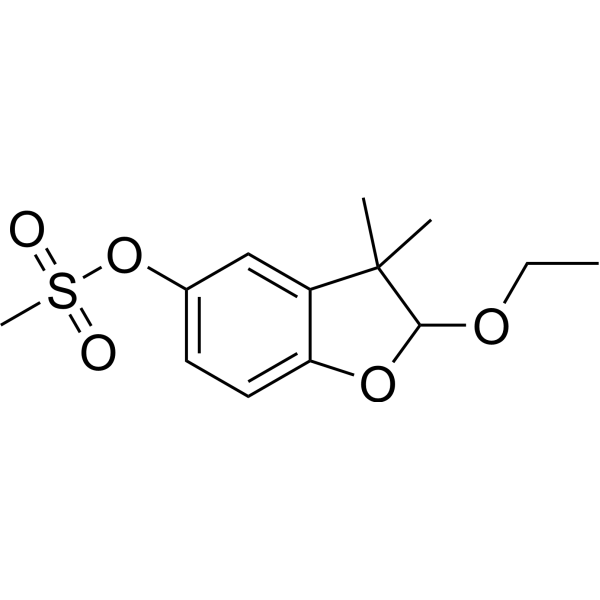
-
- HY-Y1126
-
|
(S)-(+)-Prolinol; (S)-(+)-Pyrrolidin-2-ylmethanol; (S)-1-(Pyrrolidin-2-yl)methanol
|
Biochemical Assay Reagents
|
Others
|
|
(2S)-2-Pyrrolidinemethanol ((S)-(+)-Prolinol; (S)-(+)-Pyrrolidin-2-ylmethanol; (S)-1-(Pyrrolidin-2-yl)methanol) reveals binucleophilic character and can be anchored to phthalonitrile derivative from both nitrogen and oxygen atoms. (2S)-2-Pyrrolidinemethanol can be utilized as chiral catalyst .
|
-
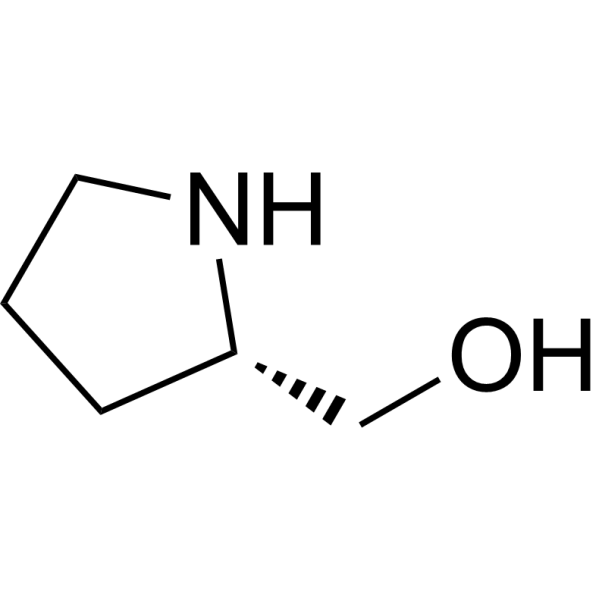
-
- HY-B1871
-
|
|
Others
|
Others
|
|
Metolachlor is a pre-emergent selective, chloroacetanilide herbicide for the control of a variety of annual grass and broad leaf weeds in corn and other crops. Metolachlor is a chiral herbicide consisting of four stereoisomers .
|
-
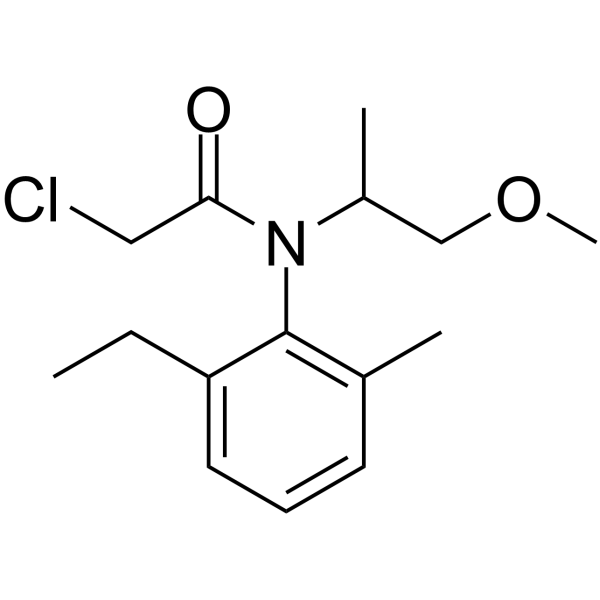
-
- HY-N9022
-
|
|
Others
|
Others
|
|
(S)-1-(4-Hydroxy-2,2-dimethylchroman-6-yl)ethanone is an enantiopure chiral alcohol. Stereoselective reduction of prochiral ketones is studied by using both cell cultures and wild tissues of various endemic plant species .
|
-

-
- HY-123622
-
|
|
Biochemical Assay Reagents
|
Others
|
|
CYMAL-5 is a cycloalkyl aliphatic saccharide. CYMAL-5 is a glycosidic surfactant (GS) with a chiral maltose polar head group and a cyclohexyl-pentyl hydrophobic tail. CYMAL-5 is a non-ionic detergent that has a tenfold lower critical micelle concentration (CMC) in comparison with OG, and has previously been used for membrane protein extraction or crystallization of membrane proteins for X-ray crystallographic studies .
|
-
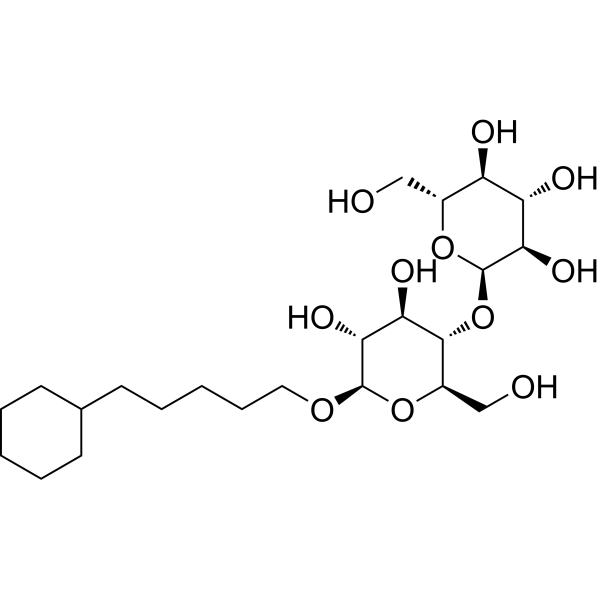
-
- HY-125630
-
|
|
Others
|
Others
|
|
Decacyclene is a large polycyclic aromatic hydrocarbon with a triple symmetry. Decacyclene is a three-blade molecular propeller in the solid state, and crystal structure analysis shows that the molecule has a non-planar twisted form, and the crystal is chiral, which may correspond to the enantiomers of the Decacyclene propeller. Decacyclene can be used for research in chemical synthesis and materials science .
|
-

-
- HY-149727
-
|
|
Adrenergic Receptor
|
Metabolic Disease
|
|
β2AR agonist 2(compound 8a) is a β2 -Adrenergic receptor (β2AR) agonist. β2AR agonist 2 is a saturated nitrogen ring compound containing 4- to 7-membered heterocycle. β2AR agonist 2 has a chiral structure (the -R form) by carrying carbon containing the essential hydroxyl, thereby enhancing cellular glucose uptake (GU) activity and significantly stimulating glucose uptake by skeletal muscle cells. β2AR agonist 2 can be used in the study of Type 2 Diabetes (T2D) .
|
-
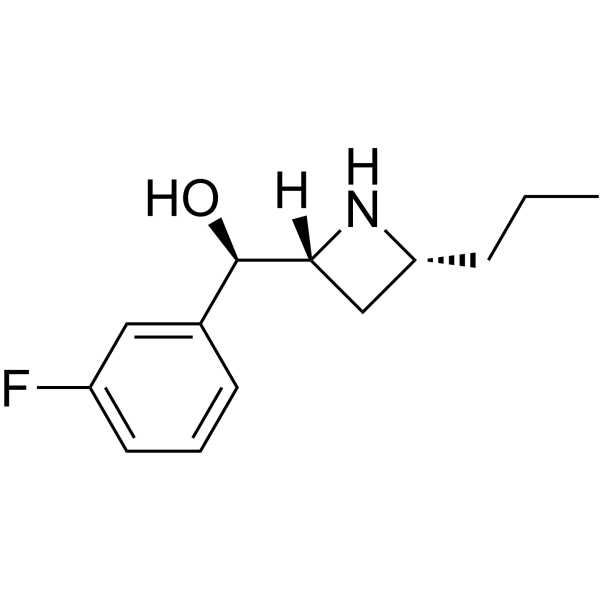
-
- HY-14507
-
|
|
DNA/RNA Synthesis
Apoptosis
|
Cancer
|
|
YK-4-279 blocks RNA Helicase A (RHA) binding with EWS-FLI1 (oncogenic protein). YK-4-279 induces apoptosis and shows anti-proliferation activities towards various cancer cells. YK-4-279 has a chiral center and it can be separated into two enantiomers. YK-4-279 can be used for the research of cancer .
|
-
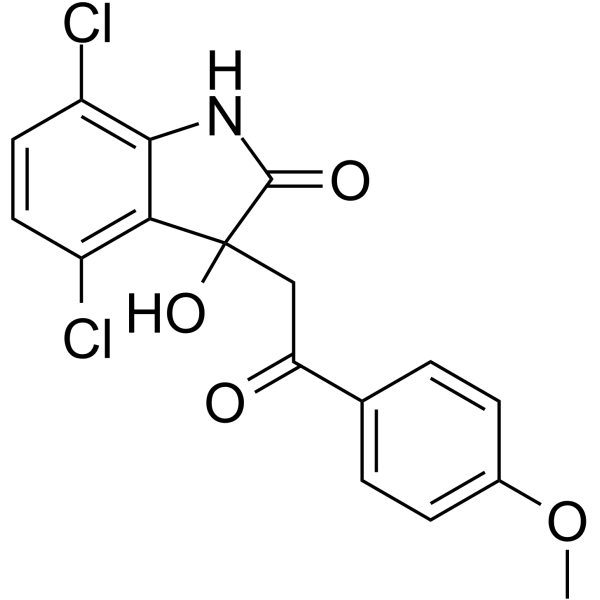
-
- HY-114769
-
|
UBH 820
|
Others
|
Others
|
|
Beflubutamid is a chiral soil herbicide against dicotyledonous weeds in cereals .
|
-
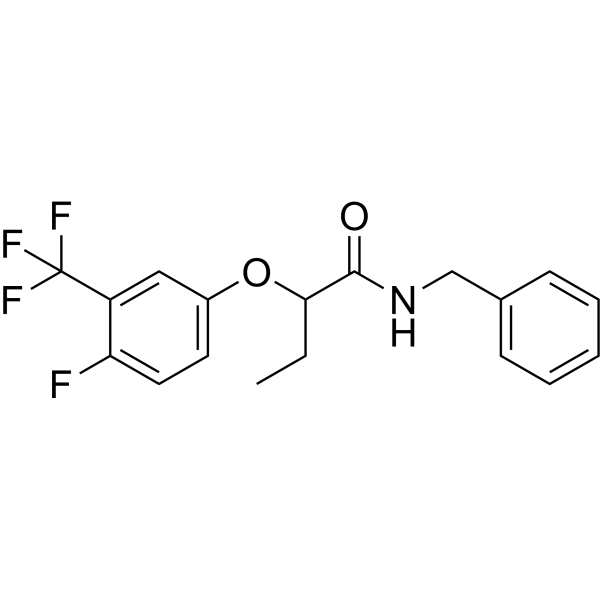
-
- HY-W062695
-
|
(R)-ACP-196
|
Btk
|
Cancer
|
|
(R)-Acalabrutinib ((R)-ACP-196) is the enantiomer of Acalabrutinib (HY-17600). (R)-Acalabrutinib is an inhibitor for Bruton’s tyrosine kinase (BTK) .
|
-

-
- HY-Y1080
-
-
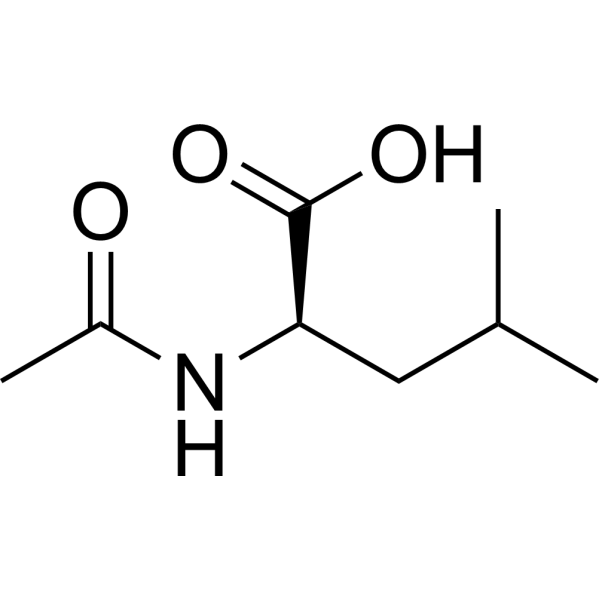
-
- HY-N9761
-
|
|
Others
|
Others
|
|
Murrayanine is a dimeric pyranoquinoline alkaloid, a mixture of two enantiomers with a predominant configuration on the chiral axis .
|
-

-
- HY-40135
-
|
(2S,4R)-4-Hydroxypyrrolidine-2-carboxylic acid
|
Endogenous Metabolite
|
Others
|
|
L-Hydroxyproline, one of the hydroxyproline (Hyp) isomers, is a useful chiral building block in the production of many pharmaceuticals.
|
-
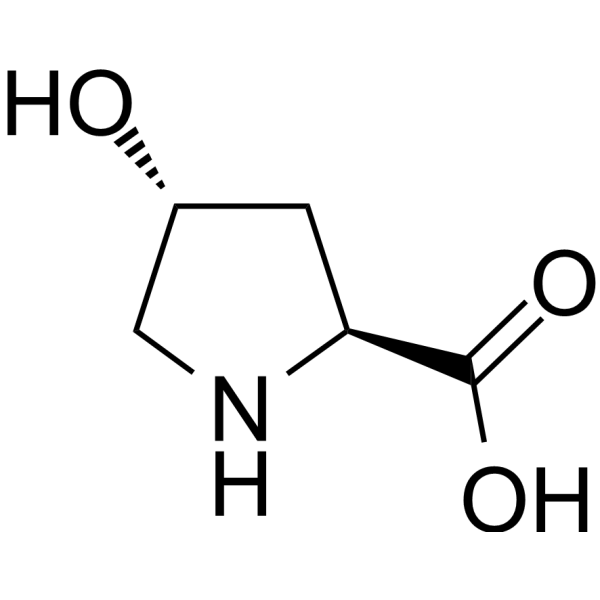
-
- HY-139166
-
|
N-Palmitoyl aspartic acid
|
Others
|
Others
|
|
N-Palmitoyl-L-aspartate (N-Palmitoyl aspartic acid) is a chiral compound with properties of the aggregates formed in aqueous solution .
|
-
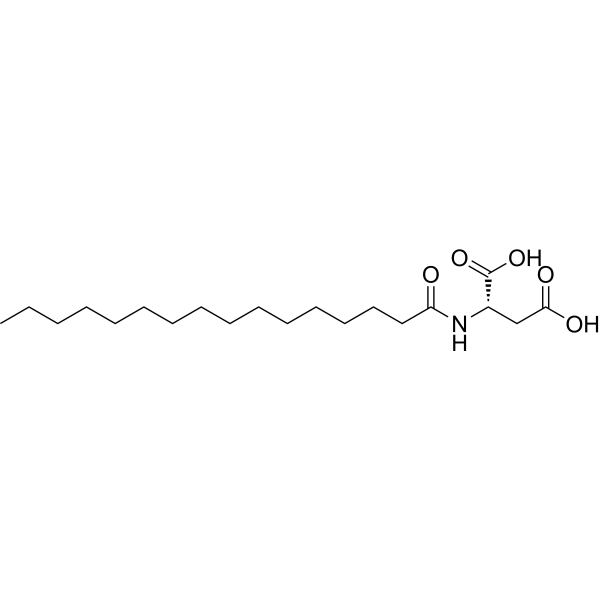
-
- HY-W017206
-
|
|
Others
|
Others
|
|
1-Phenyl-2-nitropropene is the reduction product of acetophenone and can be used to prepare chiral amine compounds .
|
-

-
- HY-70027
-
|
|
MDM-2/p53
E1/E2/E3 Enzyme
|
Cancer
|
|
p53 and MDM2 proteins-interaction-inhibitor (chiral) (Compound 32) is an inhibitor of the interaction between p53 and MDM2 proteins.
|
-

-
- HY-151702
-
|
|
ADC Linker
|
Others
|
|
(2S)-N3-IsoSer is a click chemistry reagent, a chiral alpha-hydroxypropinoic acid, containing azide group.
|
-
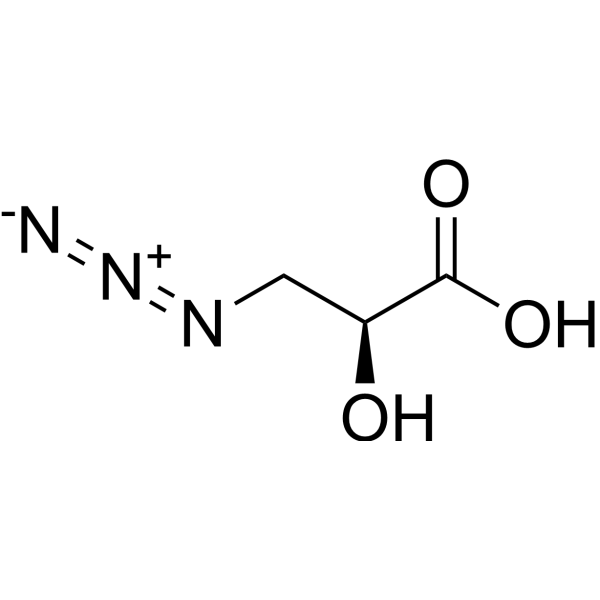
-
- HY-151702A
-
|
|
ADC Linker
|
Others
|
|
(2S)-N3-IsoSer DCHA is a click chemistry reagent, a chiral alpha-hydroxypropinoic acid, containing azide group .
|
-
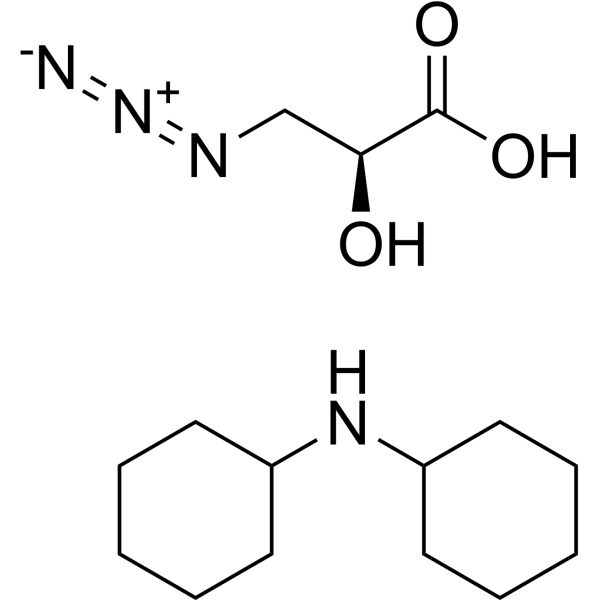
-
- HY-40135S
-
-
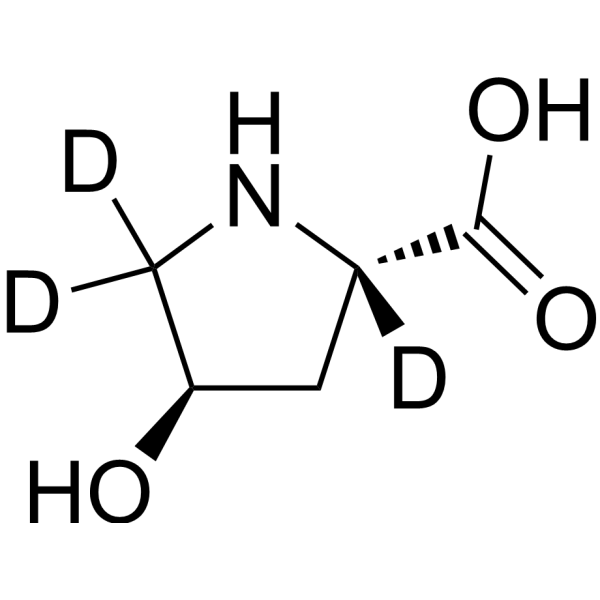
-
- HY-111487
-
|
|
Others
|
Metabolic Disease
Cancer
|
|
α-methylacyl-CoA racemase 1 is an enzyme that catalyzes a key chiral inversion step in the metabolism of branched-chain fatty acids, and used as a maker in prostate and other cancer.
|
-
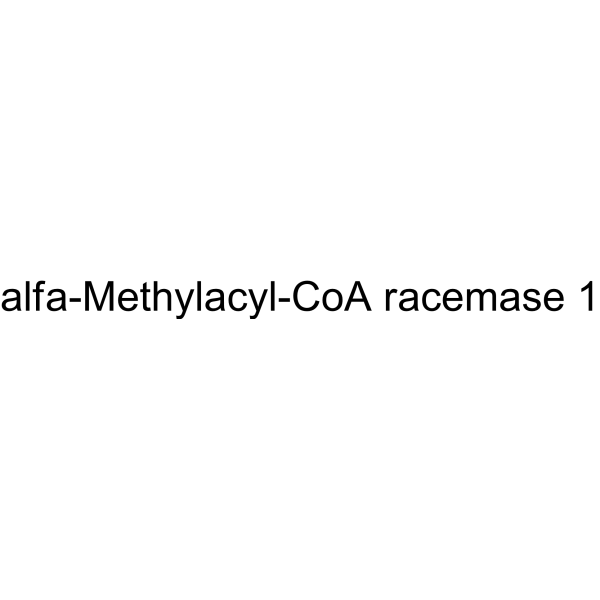
-
- HY-103028A
-
GSK963
1 Publications Verification
|
RIP kinase
|
Others
|
|
GSK963 is a chiral, highly potent and selective inhibitor of RIP1 kinase, with an IC50 of 29 nM. GSK963 is a selective and potent inhibitor of necroptosis in murine and human cells in vitro .
|
-
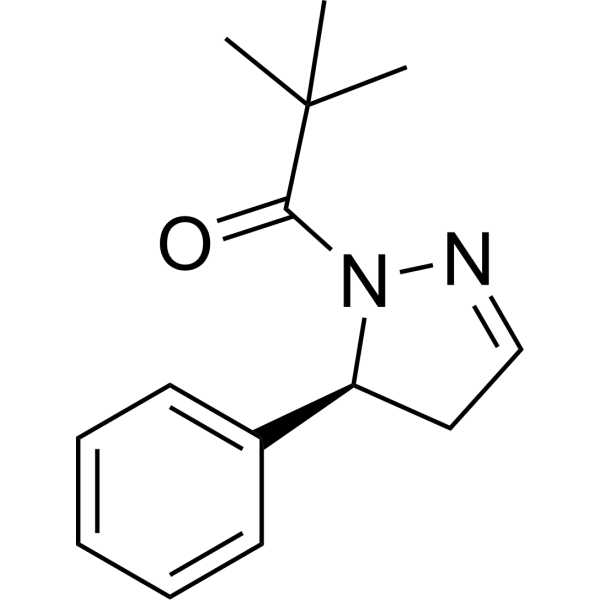
-
- HY-120460
-
|
8(R)-Hydroxyeicosatetraenoic acid
|
Others
|
Inflammation/Immunology
|
|
8(R)-HETE is biosynthesized by lipoxygenation of arachidonic acid in marine invertebrates such as gorgonian corals and starfish. Stereochemical assignment of the (R) enantiomer is based on comparison of chiral HPLC retention times to published results.
|
-

-
- HY-161249
-
|
|
Others
|
Inflammation/Immunology
|
|
Vanin-1-IN-4 (compound (S)-1) is vanin-1 inhibitor with a chiral methyl substituent, with profils as potent drug-candidate but exist as an amorphous solid .
|
-
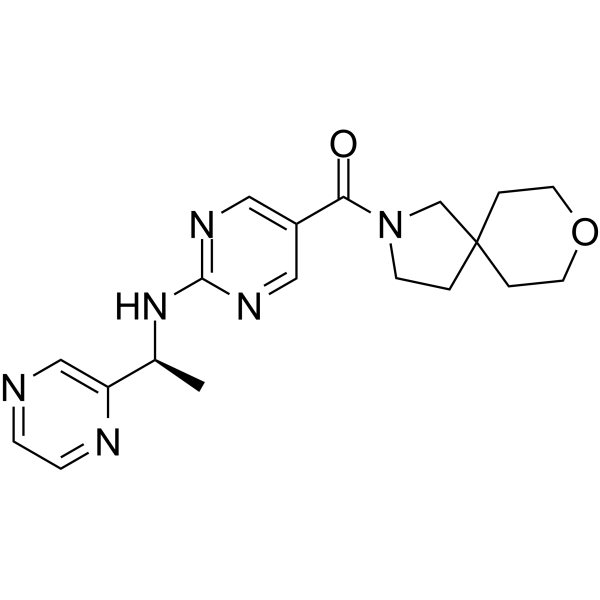
-
- HY-117089
-
|
|
Fungal
|
Infection
|
|
Tetraconazole, a chiral triazole fungicide, is widely used for the prevention of plant disease in wheat fields . Tetraconazole alters the methionine and ergosterol biosynthesis pathways in Saccharomyces yeasts promoting changes on volatile derived compounds .
|
-
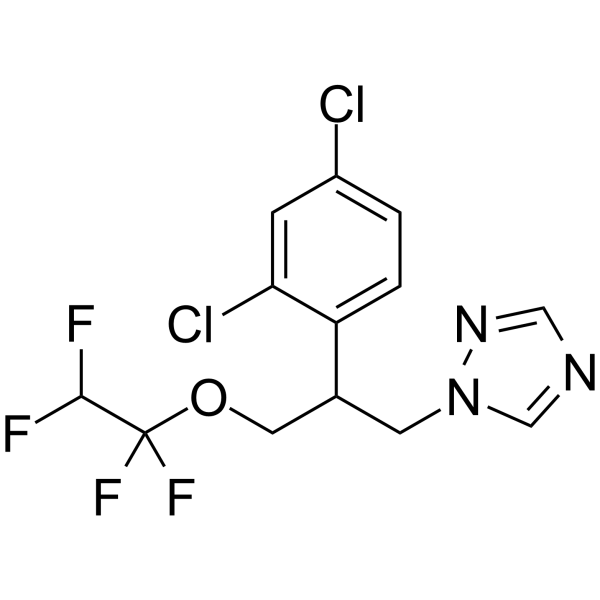
-
- HY-17520
-
|
MTF-753
|
Fungal
|
Infection
|
|
Penthiopyrad (MTF-753) is a chiral carboxamide antifungal agent with a broad spectrum of fungicidal activity. Penthiopyrad can be used for controlling foliar and soil-borne plants diseases on a broad range of agricultural crops and turfgrass .
|
-
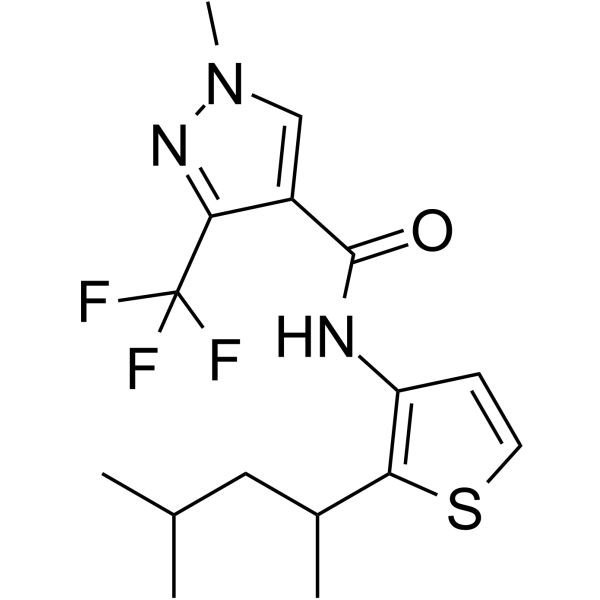
-
- HY-W012618
-
|
|
Others
|
Others
|
|
1-Phenyl-1-propanol is used as a chiral building block and synthetic intermediate in the pharmaceutical industries. 1-Phenyl-1-propanol is an intermediate of anti-depressant agent Fluoxetine .
|
-

-
- HY-117068
-
|
(R,E)-Bromoenol lactone
|
Phospholipase
|
Others
|
|
(R)-Bromoenol lactone ((R)-BEL) is an irreversible, chiral, mechanism-based inhibitor of calcium-independent phospholipase γ (iPLA2γ). (R)-BEL inhibits human recombinant iPLA2γ with an IC50 of approximately 0.6 µM .
|
-
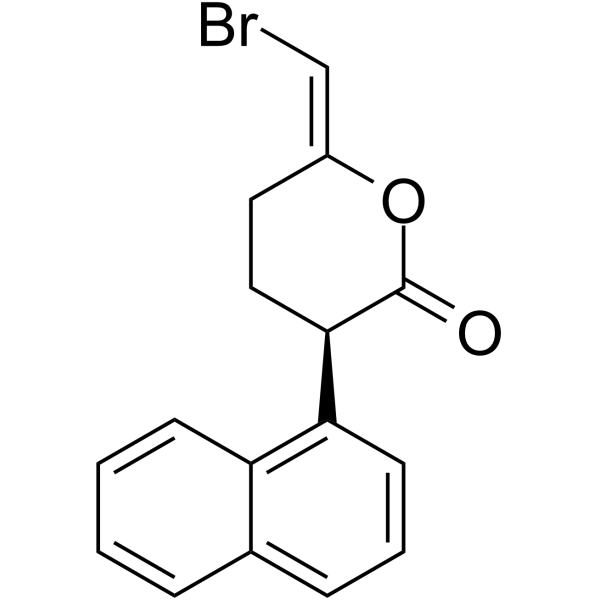
-
- HY-B1871S
-
|
|
Isotope-Labeled Compounds
|
Others
|
|
Metolachlor-d6 is the deuterium labeled Metolachlor[1]. Metolachlor is a pre-emergent selective, chloroacetanilide herbicide for the control of a variety of annual grass and broad leaf weeds in corn and other crops. Metolachlor is a chiral herbicide consisting of four stereoisomers[2][3].
|
-
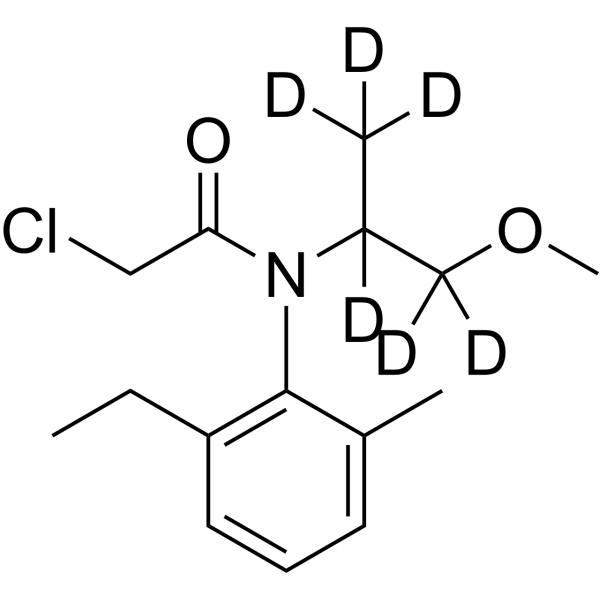
-
- HY-112792A
-
|
|
CCR
|
Endocrinology
|
|
(1S)-CCR2 antagonist 1 is a left-handed chiral body of CCR2 antagonist 1 (HY-112792). CCR2 antagonist 1 is a high-affinity and long-residence-time CCR2 antagonist, with a Ki of 2.4 nM .
|
-
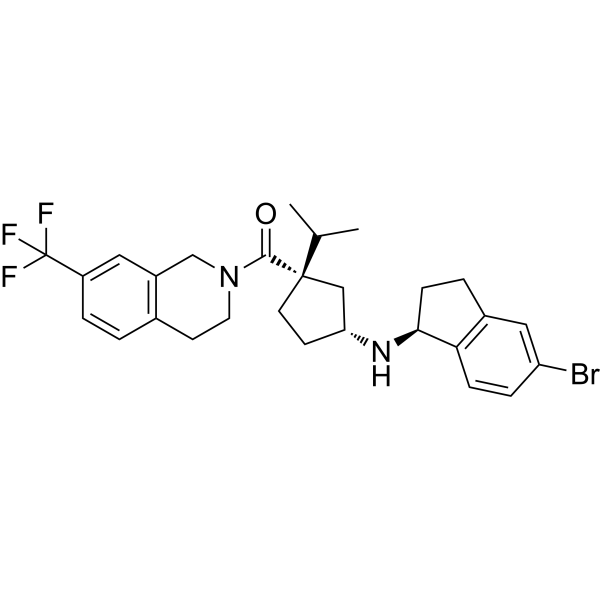
-
- HY-120986
-
|
(S)-BEL; (S,E)-Bromoenol lactone
|
Phospholipase
|
Inflammation/Immunology
|
|
(S)-Bromoenol lactone ((S)-BEL) is an irreversible, chiral, mechanism-based inhibitor of calcium-independent phospholipase A2β (iPLA2β) that inhibits the vasopressin-induced release of arachidonate from cultured rat aortic smooth muscle (A10) cells with an IC50 of 2 µM .
|
-
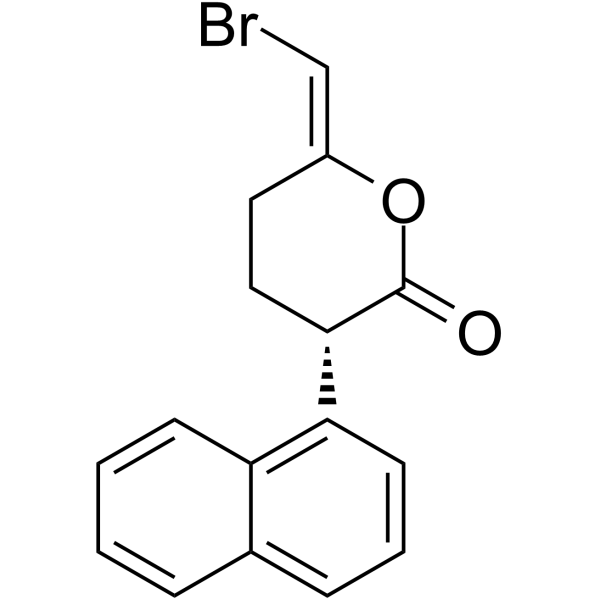
-
- HY-115408
-
|
9(R)-Hydroxyeicosatetraenoic acid
|
Others
|
Others
|
|
9(R)-HETE is an enantiomer which makes up 50% of (±)9-HETE. At a concentration of 300 nM, 9(R)-HETE activates RXRγ-dependent transcription 1.5 fold relative to a control.1 Stereochemical assignment of the (R) enantiomer is based on comparison of chiral HPLC retention times to published results.
|
-

-
- HY-123016
-
|
|
Endogenous Metabolite
|
Cardiovascular Disease
|
|
9(S)-HODE cholesteryl ester is originally extracted from atherosclerotic lesions. It remains uncertain whether the oxidized fatty acid portion of the molecule results from enzymatic lipoxygenation or from random lipid peroxidation.2 9(S)-HODE cholesteryl ester can be used as a standard for analysis of chiral HODE cholesteryl esters.
|
-

-
- HY-125394
-
|
|
Endogenous Metabolite
|
Cardiovascular Disease
|
|
9(R)-HODE cholesteryl ester is originally extracted from atherosclerotic lesions. It remains uncertain whether the oxidized fatty acid portion of the molecule results from enzymatic lipoxygenation or from random lipid peroxidation.2 9(R)-HODE cholesteryl ester can be used as a standard for analysis of chiral HODE cholesteryl esters.
|
-

-
- HY-120967A
-
|
|
Biochemical Assay Reagents
|
Others
|
|
(2S)-OMPT triethylamine, a chiral oxirane derivative, is commonly used as a ligand in asymmetric catalysis, especially in the enantioselective synthesis of bioactive molecules such as amino acids and drugs. (2S)-OMPT triethylamine has unique chemical properties that allow it to selectively bind certain metal complexes and activate them in a way that favors the formation of specific enantiomers.
|
-

-
- HY-112653
-
|
8(S)-Hydroxyeicosatetraenoic acid
|
Others
|
Inflammation/Immunology
|
|
8(S)-HETE is a major lipoxygenase product in PMA-treated murine epidermis. It activates mouse keratinocyte protein kinase C with an IC50 of 100 μM.2 8(S)-HETE also activates PPARα selectively at concentrations as low as 0.3 μM.3 Stereochemical assignment of the (S) enantiomer is based on comparison of chiral HPLC retention times to published results.
|
-

-
- HY-75920
-
|
|
Biochemical Assay Reagents
|
Others
|
|
Inhoffen Lythgoe diol is an organic molecule commonly used in chiral selective reactions in organic synthesis. It can be used as a catalyst and a ligand, and has a wide range of applications in the preparation of nitrogen- and sulfur-containing natural products, pharmaceuticals, and material science. Inhoffen Lythgoe diol plays a very important role in the field of asymmetric synthesis. Although it has no direct medical application, it plays an important role in the production and research of many important chemicals.
|
-
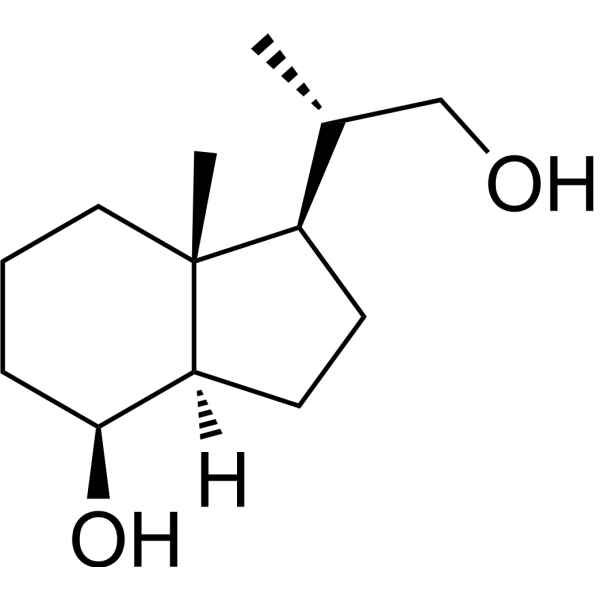
-
- HY-N0548
-
|
|
Glutathione S-transferase
|
Cancer
|
|
α-Angelica lactone is a naturally occurring anticarcinogen and an vinylogous nucleophile. α-Angelica lactone can give the chiral δ-amino γ,γ-disubstituted butenolide carbonyl derivatives and exhibitselectrophilic trapping at the γ-carbon. α-Angelica lactone exerts strong chemoprotective effects by selective enhancement of glutathione-S-thansferase (GST) and UDP-glucononosyltransferase (UGT) detoxification enzymes .
|
-
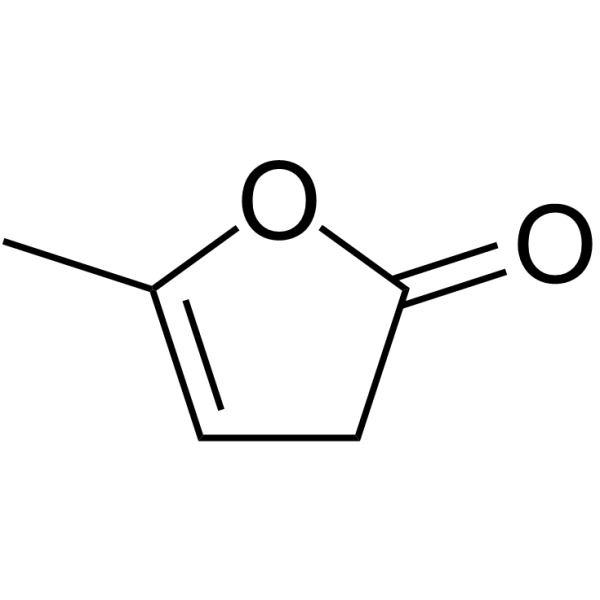
-
- HY-W010394
-
|
|
Biochemical Assay Reagents
|
Others
|
|
Methyl 3-oxopentanoate, which is also known as diethyl acetylmalonate or MEAM, Methyl 3-oxopentanoate is commonly used as a building block for the synthesis of various organic compounds, including pharmaceuticals, agrochemicals, and flavorings, and it can also Used as a reagent in organic chemical reactions, especially the formation of carbon-carbon bonds through malonate synthesis, the researchers also investigated the potential use of Methyl 3-oxopentanoate in the development of chiral auxiliaries that can aid in the selection of Controlling the stereochemistry of chemical reactions.
|
-
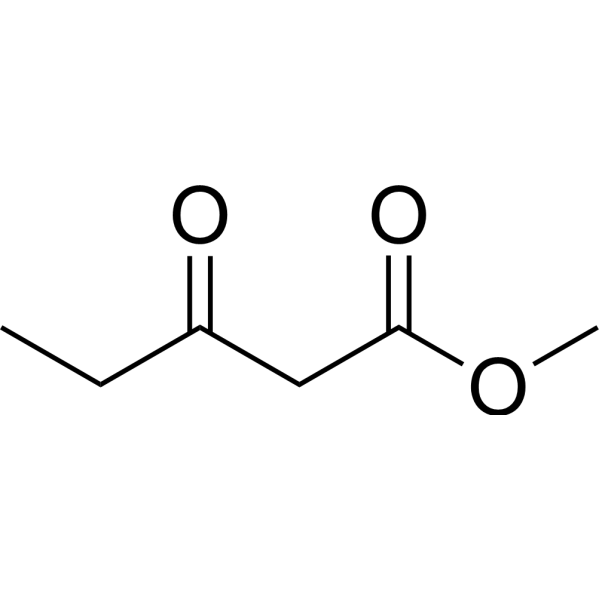
-
- HY-W010507
-
|
Methyl (R)-(-)-3-hydroxybutyrate
|
Biochemical Assay Reagents
|
Others
|
|
(R)-Methyl 3-hydroxybutanoate, (R)-Methyl 3-hydroxybutanoate is an enantiomer, from the perspective of the methyl (-CH3) group, the hydroxyl (-OH) group on the third carbon atom The group faces to the right, a colorless transparent liquid, soluble in organic solvents such as ethanol and ether, insoluble in water, (R)-Methyl 3-hydroxybutanoate is usually used to synthesize various organic compounds (including drugs, agricultural chemicals and flavoring agents) It can also be used as a chiral auxiliary in asymmetric synthetic reactions involving the formation of chemical bonds in a stereoselective manner.
|
-

-
- HY-F0003
-
|
|
Ferroptosis
Endogenous Metabolite
|
Cancer
|
|
NADPH tetrasodium salt functions as an important cofactor in a variety of metabolic and biosynthetic pathways. NADPH tetrasodium salt plays a vital role in the biosynthesis of agents, chiral alcohols, fatty acids and biopolymers, while also being required for lipid biosynthesis, biomass formation, and cell replication. The demand for NADPH tetrasodium salt is particularly high in proliferating cancer cells, where it acts as a cofactor for the synthesis of nucleotides, proteins, and fatty acids. NADPH tetrasodium salt is also essential for the neutralization of the dangerously high levels of reactive oxygen species (ROS) generated by increased metabolic activity. NADPH tetrasodium salt is an endogenous inhibitor of ferroptosis .
|
-

-
- HY-W142618
-
|
|
Biochemical Assay Reagents
|
Others
|
|
D-Glucal is an organic compound belonging to the family of aldoses, which are monosaccharides containing an aldehyde functional group. It has a six-carbon structure and is derived from glucose by oxidation of the primary alcohol group at carbon 1 to an aldehyde group. D-Glucal is a white crystalline solid that is soluble in water and has a sweet taste. It is an important intermediate in the chemical synthesis of a wide variety of compounds, including pharmaceuticals, agrochemicals, and natural products. D-Glucal can be converted into other carbohydrate derivatives such as glycosides, glycoconjugates and amino sugars. It also plays a role in the study of carbohydrate chemistry, where it is used as a chiral building block for the synthesis of complex structures.
|
-
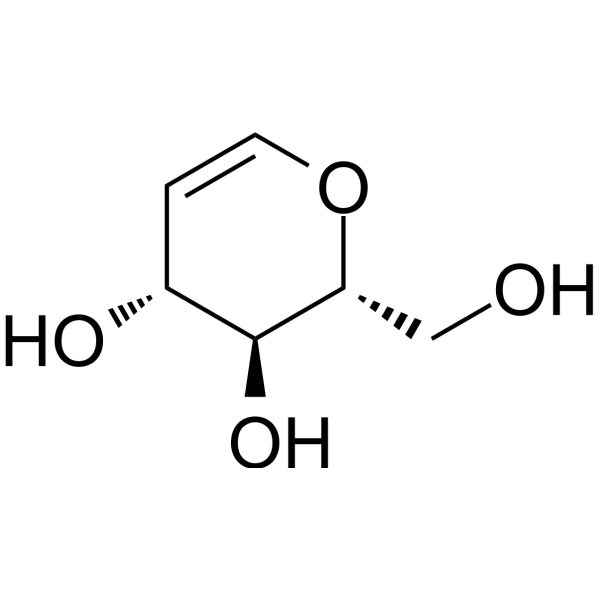
-
- HY-17626B
-
|
WCK-2349 hydrochloride
|
Antibiotic
|
Infection
|
|
Alalevonadifloxacin (hydrochloride) (WCK-2349 (hydrochloride)) is a oraaly active anti-methicillin-resistant Staphylococcus aureus (MRSA) antibiotic .
|
-

-
- HY-N12970
-
|
|
Others
|
Others
|
|
14S(15R)-EET is an endogenous epoxytrienoic acid derivative that mainly exists in rat organs. By studying its metabolic process, it was found that its stereoselective hydration and formation of chiral diols were significantly affected by epoxidase. Different 14,15-EET enantiomers showed different regions and stereochemistry of hydration reactions, among which 14(R),15(S)-EET showed specific hydration for C15. These findings reveal the important role of epoxidase in the metabolism of endogenous EETs, and the differences in enzyme affinity and reaction rate for individual EET enantiomers may lead to their stereoselective metabolism .
|
-

-
- HY-10306
-
|
|
Integrin
|
Cardiovascular Disease
|
|
Gantofiban is a GPIIb/IIIa integrin receptor antagonist. By binding to this receptor, Gantofiban can effectively inhibit platelet aggregation, thereby exerting its antithrombotic effect .
|
-

-
- HY-121814A
-
|
(R)-Acenocoumarin; (R)-Nicoumalone
|
Others
|
Others
|
|
(R)-Acenocoumarol ((R)-Acenocoumarin; (R)-Nicoumalone) is a short-acting oral anticoagulant that, like warfarin, works by inhibiting vitamin K epoxide reductase. In vitro evaluations have shown that (R)-Acenocoumarol ((R)-Acenocoumarin; (R)-Nicoumalone) has a higher intrinsic anticoagulant potency than warfarin and phenprocoumon. (R)-Acenocoumarol ((R)-Acenocoumarin; (R)-Nicoumalone) has a single chiral center that produces two different enantiomeric forms. (R)-(R)-Acenocoumarol ((R)-Acenocoumarin; (R)-Nicoumalone) has a longer plasma elimination half-life (6.6 hours) and a slower plasma clearance rate (1.9 L/hour) compared to the (S)-enantiomer (1.8 hours, 28.5 L/hour). (R)-(R)-Acenocoumarol ((R)-Acenocoumarin; (R)-Nicoumalone) is a more potent anticoagulant in vivo than the (S)-enantiomer.
|
-

-
-
HY-L0120V
-
|
|
170,269 compounds
|
|
“BioDesign” approach incorporates key structural features of known pharmacologically relevant natural products (e.g. alkaloids and other secondary metabolites) into synthetically feasible medicinal chemistry scaffolds. In order to identify the privileged pharmacophores, ring systems and linkers, we have carried out statistical analysis of structural features of natural products, marketed drugs, and drug candidates.
Saturated, fused ring, spiro, and bridged systems with a tendency towards multiple chiral centers are highly privileged among natural products and marketed drugs yet these structures are very poorly represented in commercial libraries. This library addressed this market need by incorporating these privileged elements into the design of novel synthetic molecules with high molecular framework diversity, multiple stereogenic centers (≥2), and degree of saturation (Fsp3 > 0.5).
|
-
-
HY-L903
-
|
|
5,196 compounds
|
|
Fragment-based drug discovery (FBDD) is well suited for discovering both drug leads and chemical probes of protein function. 3-dimensionality (3D) diversity is pivotal because the molecular shape is one of the most important factors in molecular recognition by a biomolecule. There is a developing appreciation that 3D fragments could offer opportunities that are not provided by 2D fragments.
MCE 3D Diverse Fragment Library consists of 5,196 non-flat fragment-like molecules (average Fsp3 value 0.58). More than 4,700 fragment compounds contain at least one chiral center in the structure. The key concepts that underlie the library design were 3D shape, structural diversity, reactive functionality and fragment-like. This 3D Diverse Fragment Library brings higher fragment hit optimization and increases the likelihood to find innovative hits in FBDD.
|
| Cat. No. |
Product Name |
Type |
-
- HY-W002502
-
|
Hydroquinine 1,4-phthalazinediyl diether; 1,4-Bis(dihydroquinine)phthalazine; (DHQ)2PHAL
|
Biochemical Assay Reagents
|
|
(DHQ)2PHAL (Hydroquinine 1,4-phthalazinediyl diether; 1,4-Bis(dihydroquinine)phthalazine) can be utilized as chiral ligand in asymmetric dihydroxylation .
|
-
- HY-I0259
-
|
|
Biochemical Assay Reagents
|
|
8-Amino-2-naphthol is a photoactive charge transfer compounds, which can be used as fluorescent probe. 8-Amino-2-naphthol is also utilized as chiral organocatalyst .
|
-
- HY-75920
-
|
|
Biochemical Assay Reagents
|
|
Inhoffen Lythgoe diol is an organic molecule commonly used in chiral selective reactions in organic synthesis. It can be used as a catalyst and a ligand, and has a wide range of applications in the preparation of nitrogen- and sulfur-containing natural products, pharmaceuticals, and material science. Inhoffen Lythgoe diol plays a very important role in the field of asymmetric synthesis. Although it has no direct medical application, it plays an important role in the production and research of many important chemicals.
|
-
- HY-Y1126
-
|
(S)-(+)-Prolinol; (S)-(+)-Pyrrolidin-2-ylmethanol; (S)-1-(Pyrrolidin-2-yl)methanol
|
Biochemical Assay Reagents
|
|
(2S)-2-Pyrrolidinemethanol ((S)-(+)-Prolinol; (S)-(+)-Pyrrolidin-2-ylmethanol; (S)-1-(Pyrrolidin-2-yl)methanol) reveals binucleophilic character and can be anchored to phthalonitrile derivative from both nitrogen and oxygen atoms. (2S)-2-Pyrrolidinemethanol can be utilized as chiral catalyst .
|
-
- HY-123622
-
|
|
Biochemical Assay Reagents
|
|
CYMAL-5 is a cycloalkyl aliphatic saccharide. CYMAL-5 is a glycosidic surfactant (GS) with a chiral maltose polar head group and a cyclohexyl-pentyl hydrophobic tail. CYMAL-5 is a non-ionic detergent that has a tenfold lower critical micelle concentration (CMC) in comparison with OG, and has previously been used for membrane protein extraction or crystallization of membrane proteins for X-ray crystallographic studies .
|
-
- HY-W010394
-
|
|
Biochemical Assay Reagents
|
|
Methyl 3-oxopentanoate, which is also known as diethyl acetylmalonate or MEAM, Methyl 3-oxopentanoate is commonly used as a building block for the synthesis of various organic compounds, including pharmaceuticals, agrochemicals, and flavorings, and it can also Used as a reagent in organic chemical reactions, especially the formation of carbon-carbon bonds through malonate synthesis, the researchers also investigated the potential use of Methyl 3-oxopentanoate in the development of chiral auxiliaries that can aid in the selection of Controlling the stereochemistry of chemical reactions.
|
-
- HY-W010507
-
|
Methyl (R)-(-)-3-hydroxybutyrate
|
Biochemical Assay Reagents
|
|
(R)-Methyl 3-hydroxybutanoate, (R)-Methyl 3-hydroxybutanoate is an enantiomer, from the perspective of the methyl (-CH3) group, the hydroxyl (-OH) group on the third carbon atom The group faces to the right, a colorless transparent liquid, soluble in organic solvents such as ethanol and ether, insoluble in water, (R)-Methyl 3-hydroxybutanoate is usually used to synthesize various organic compounds (including drugs, agricultural chemicals and flavoring agents) It can also be used as a chiral auxiliary in asymmetric synthetic reactions involving the formation of chemical bonds in a stereoselective manner.
|
-
- HY-W142618
-
|
|
Biochemical Assay Reagents
|
|
D-Glucal is an organic compound belonging to the family of aldoses, which are monosaccharides containing an aldehyde functional group. It has a six-carbon structure and is derived from glucose by oxidation of the primary alcohol group at carbon 1 to an aldehyde group. D-Glucal is a white crystalline solid that is soluble in water and has a sweet taste. It is an important intermediate in the chemical synthesis of a wide variety of compounds, including pharmaceuticals, agrochemicals, and natural products. D-Glucal can be converted into other carbohydrate derivatives such as glycosides, glycoconjugates and amino sugars. It also plays a role in the study of carbohydrate chemistry, where it is used as a chiral building block for the synthesis of complex structures.
|
| Cat. No. |
Product Name |
Target |
Research Area |
| Cat. No. |
Product Name |
Category |
Target |
Chemical Structure |
| Cat. No. |
Product Name |
Chemical Structure |
-
- HY-40135S
-
|
|
|
L-Hydroxyproline-d3 is the deuterium labeled L-Hydroxyproline. L-Hydroxyproline, one of the hydroxyproline (Hyp) isomers, is a useful chiral building block in the production of many pharmaceuticals.
|
-

-
- HY-B1871S
-
|
|
|
Metolachlor-d6 is the deuterium labeled Metolachlor[1]. Metolachlor is a pre-emergent selective, chloroacetanilide herbicide for the control of a variety of annual grass and broad leaf weeds in corn and other crops. Metolachlor is a chiral herbicide consisting of four stereoisomers[2][3].
|
-

| Cat. No. |
Product Name |
|
Classification |
-
- HY-151702A
-
|
|
|
Azide
|
|
(2S)-N3-IsoSer DCHA is a click chemistry reagent, a chiral alpha-hydroxypropinoic acid, containing azide group .
|
-
- HY-151702
-
|
|
|
Azide
|
|
(2S)-N3-IsoSer is a click chemistry reagent, a chiral alpha-hydroxypropinoic acid, containing azide group.
|
Your information is safe with us. * Required Fields.
Inquiry Information
- Product Name:
- Cat. No.:
- Quantity:
- MCE Japan Authorized Agent:



























































